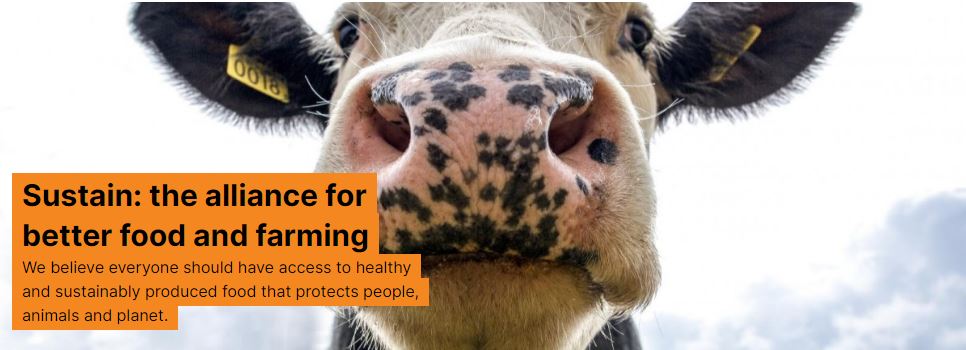Bread in a Healthy Food System
The Real Bread Campaign is a part of the SUSTAIN alliance of organisations and communities working together for a better system of food, farming and fishing. SUSTAIN advocates food and agriculture policies and practices that enhance the health and welfare of people and animals, improve the working and living environment, enrich society and culture and promote equality. Find out more at https://www.sustainweb.org/
When is sourdough not sourdough?
When it’s sourfaux, Real Bread Campaign coordinator, Chris Young tells us.
Rather than a look, style, taste, trend or fad, sourdough is a process – it’s the oldest way of making dough rise. Yeasts and lactic acid bacteria that are naturally present on the surface of grains end up in flour. These can be nurtured to create a thriving sourdough starter culture that can be used to make brilliant bread – savoury or sweet. As well as the potential to produce great-tasting bread, a growing body of evidence suggests that the long-fermentation, genuine sourdough process might have health and other nutritional benefits. These might include lowering glycaemic index, reducing FODMAPs – the fermentable oligosaccharides, disaccharides, monosaccharides and polyols, which are short-chain carbohydrates (sugars) that the small intestine absorbs poorly and may be responsible for some digestive disorders – and modifying the gluten proteins that a small minority of people have difficulty tolerating.
Compared to other methods of making bread, crafting great sourdough requires extra time and skills, things in which certain industrial loaf fabricators (and some other crafty bakers) prefer not to invest. In order to still get a slice of the action, they select from a whole arsenal of additives, typically accelerate the process with baker’s yeast or chemical raising agents (such as baking soda) and might leave out the live starter culture altogether. These fundamental differences mean that the changes upon which taste, texture and other potential benefits of genuine sourdough breadmaking rely cannot occur to the same extent, if at all.
Rather than calling these fundamentally different products something else, they name and market them using the word sourdough – we call this sourfaux. It’s not unusual to see supermarkets and other companies charging people more for sourfaux than other loaves in their range. Lower production costs per loaf enable them to set a premium price at a point that still undercuts small, independent bakeries at the hearts of local communities but at the other end of economies of scale.
So, what can be done? In many countries, there is not a legal definition of sourdough bread, something we continue to call for as part of our Honest Crust Act lobbying in the UK. Please do consider taking action right there, where you are. Wherever you are in the world, always read the label to know what you’re getting and please support your neighbourhood bakery, if you’re lucky enough to have one. If you’re not, how about starting a microbakery at your museum or even from home? We have tips on our website.
In the meantime, we invite everyone to join us in celebrating all Real Bread (by which we simply mean additive-free) and bakers who make it through the year. During #SourdoughSeptember we have a special focus on, well, the clue’s in the name. We encourage companies and other organisations to run classes, events and activities that help people to follow the whole breadmaking process from seed to sandwich – ideally with plenty of hands-on action for full engagement of children and adults alike. This is something that agricultural museums are very well placed to do, with various combinations of farming, baking, milling and other experts putting it all into socio-historical context.
Get real, say no to sourfaux and join the Real Bread Campaign! www.realbreadcampaign.org @realbreadcampaign
Author: Chris Young, Real Bread Campaign Coordinator


